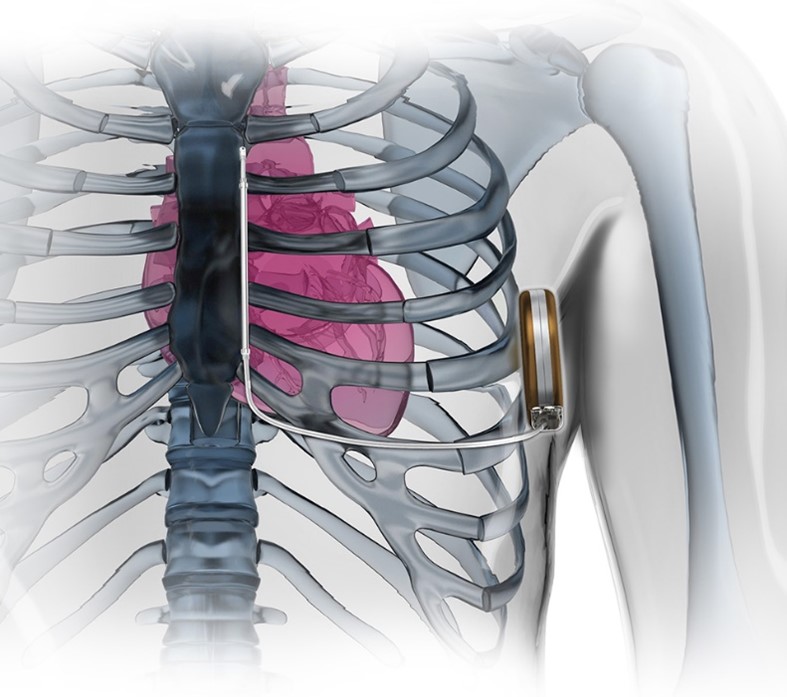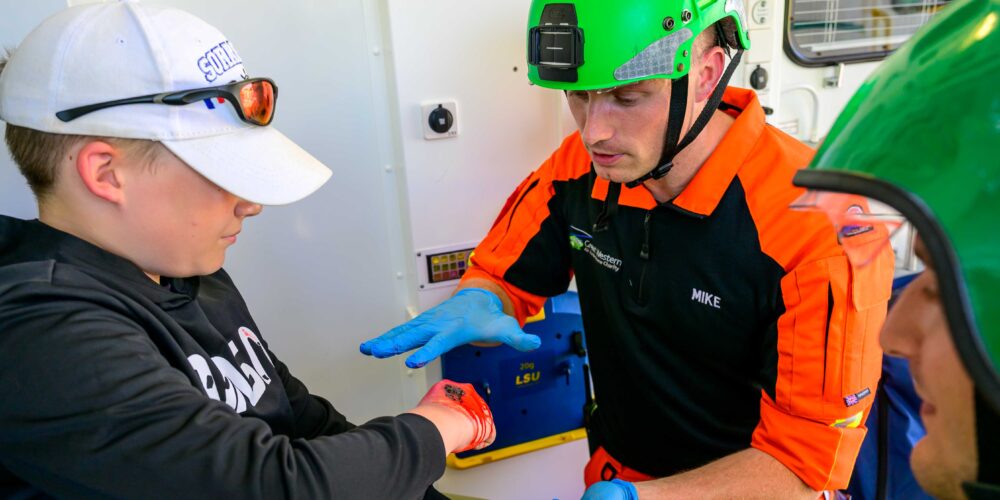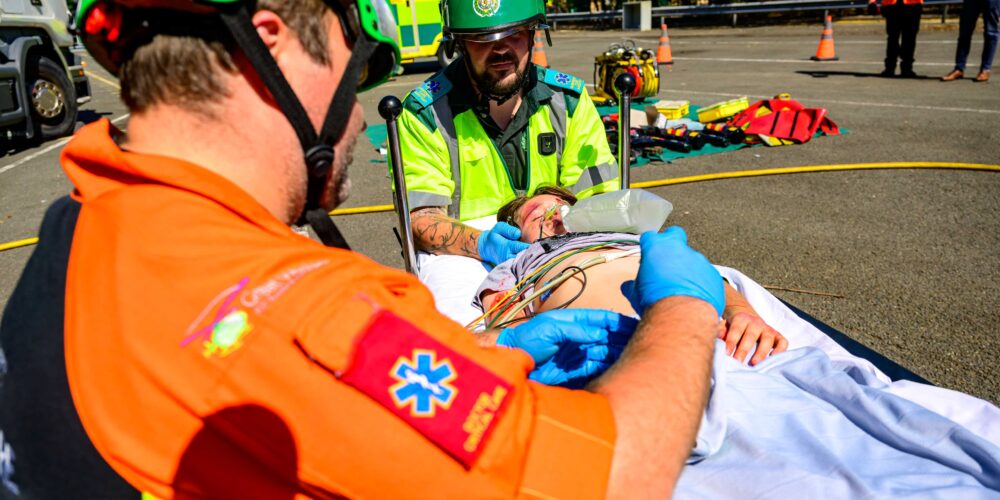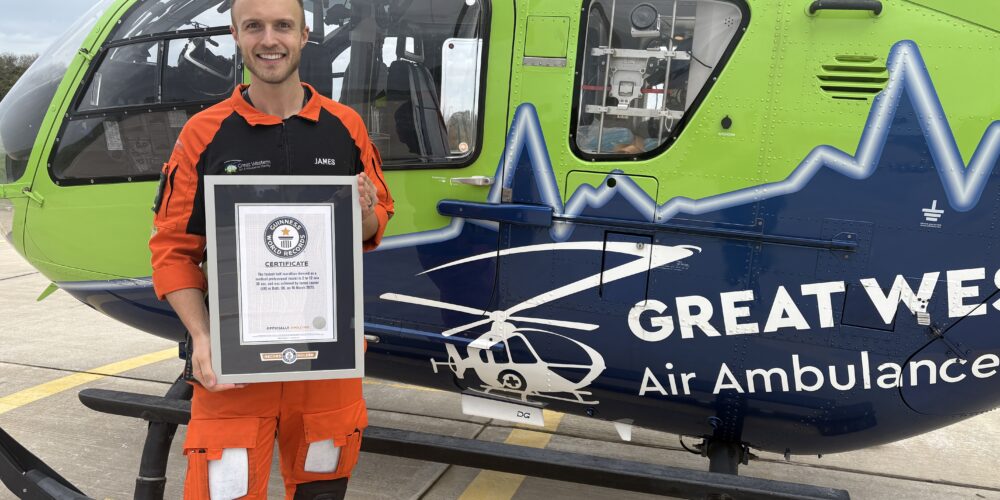
GWAAC’s Symposium 2022
October 11, 2022
Ultrasound
October 19, 2022What should have been a very normal Saturday for Cathy, suddenly turned upside down when she was least expecting it. This is a story of how a fit and healthy young mum, from Royal Wootton Bassett, suffered a cardiac arrest and lived to tell the tale.
On 14 April 2018, after the usual morning shopping trip, Cathy took her son, six-year-old Ewan, for his weekly riding lesson at the local stables. Ewan joined a group of three other children and all was going well until a little girl fell off her pony and broke her arm.
The children’s riding instructor, and the parents watching from the sidelines, kicked into action to help — Chloe, the instructor, immediately went to the little girl while Cathy and her friend ran into the arena to catch the loose pony.
Out of the blue
Suddenly a bad situation turned much worse when Cathy collapsed on the ground, needing priority attention.
(Cathy can’t remember anything of the day so the rest of her story has been pieced together by the friends and medics who attended her.)
Chloe quickly realised that she had a more urgent problem on her hands and rushed over to help Cathy. By the time she reached her, Cathy had turned a worrying shade of blue. She was unconscious and wasn’t breathing.
An ambulance was called, and Great Western Air Ambulance Charity (GWAAC) was dispatched.
Keeping Cathy’s heart going
With the call responder still on the phone and providing much-needed reassurance, Chloe began cardiopulmonary resuscitation (CPR) on Cathy. She continued until Wesley, the father of the injured young rider, could step in and help. Wesley said: “We were giving CPR for 15 to 20 minutes, but it felt like an eternity.”
A St John’s community first responder arrived soon after and provided some relief. Cathy said: “I bump into him every now and then – he volunteers for a group not far from where I live – he’s told me that my incident was one of the calmest scenes he’d ever attended.” A statement that is testimony to the way the bystanders handled a very stressful situation.
While Cathy and the injured rider were being looked after, the other children were kept busy; Ewan was taken off to groom a “particularly hairy pony,” and the two other little riders were occupied in the office.
When the land ambulance arrived, the crew used an automated external defibrillator (AED) to shock Cathy, and Wesley and Chloe continued to give compressions between the shocks.
GWAAC crew stabilise Cathy
GWAAC’s Critical Care Doctors, Andrew Holdstock and Cosmo Scurr, and Specialist Paramedic in Critical Care, John Wood, quickly arrived by helicopter and used their skills and equipment to stabilise Cathy.
The Critical Care Team administered drugs into Cathy’s legs. Chloe told Cathy afterward that she remembers thinking, “I hope she doesn’t get an infection with all those holes in her legs.” It’s funny what you can focus on in a time of crisis!
Cathy said: “They stabilised me enough to move me, but I needed more shocks in the ambulance.” The Critical Care Team travelled with Cathy to help transport her safely to Great Western Hospital in Swindon. It took a team effort to save Cathy’s life that day.
A long and tough recovery
Four days later Cathy woke up in intensive care. After countless tests and five weeks in hospital, she returned home with a subcutaneous implantable cardioverter defibrillator (S-ICD).
Cathy suffered from intense anxiety following her cardiac arrest. She found it difficult to spend time alone so she started a blog as a type of therapy — My heart and me can be found on Facebook and Instagram. She says: “I still find it really helpful, especially on tougher days, to see just how far I’ve come.” Cathy’s social pages are an inspirational resource that helps show how recovery is not a straight line and comes in ebbs and flows.
In March of 2019, nearly one year after Cathy’s heart stopped, and after lots of tests, Cathy was diagnosed with a rare heart condition called catecholaminergic polymorphic ventricular tachycardia (CPVT). CPVT affects young people and is an inherited condition that manifests in blackouts, palpitations and dizziness, which in worst-case scenarios, can lead to sudden death.
Living with CPVT
Looking back, Cathy says she did have a few prior warnings — there were a couple of fainting episodes when she was aged 17-18 and she had a tilt table test at 19 years old but nothing unusual was detected.
The condition is usually inherited but Cathy’s parents and sister have been genetic-tested and none of them have the gene. Cathy says she might be a “strange case” where the gene mutated as she got older.
The worst thing about the whole incident and diagnosis was waiting for Ewan’s test result. “I had to stop him from getting too excited. How do you keep a seven-year-old boy from exerting himself?”
Not only has Cathy had to adjust to living with this condition, but she has also had to learn to live with a brain injury from her cardiac arrest; she finds it hard to learn new things and can feel fatigued because not enough oxygen reaches her brain. Cathy says: “I was without oxygen for 45 minutes and had a hypoxic brain injury as a result. I get brain fog. It seems a bit better now, but this could also be the way I’ve adapted.”
Bystander bravery gave Cathy a second chance
Cathy was 35 years old when she suffered a cardiac arrest. Four years on, she has taken some big steps to regain her confidence. From going on dog walks on her own to getting back in the saddle, Cathy’s story highlights the long road to recovery many patients experience after a cardiac arrest and she counts herself lucky to have been referred, by the hospital, for Cognitive Behavioural Therapy (CBT): “I’d suggest to anyone in a similar position that they take the offer of CBT; it really helped me on the road to recovery.”
Although she still has some hurdles to overcome, Cathy knows that without the bravery of Chloe and Wesley, her story could have been very different. Wesley highlights: “It is important for people to know that performing CPR is very simple, and even if you know nothing more than what you’ve seen on TV, even that minimum amount of help can mean the difference between life and death.”
Cathy says: “I cannot thank them enough. They all saved my life that day. CPR got me going and kept me alive; it made me as well as I am today.”
If you would like to learn more about the importance of CPR and defibrillation, and how GWAAC is helping to raise awareness and train people in this important life support skill, take a look at our Great Western Heartstarters training program.
“I cannot thank them enough. They all saved my life that day. CPR got me going and kept me alive; it made me as well as I am today.”
- Cathy and son riding
- Cathy with GWAAC Specialist Paramedic John Wood
- Cathy in hospital
- Image of S-ICD from Boston Scientific website
“It is important for people to know that performing CPR is very simple, and even if you know nothing more than what you’ve seen on TV, even that minimum amount of help can mean the difference between life and death.”







